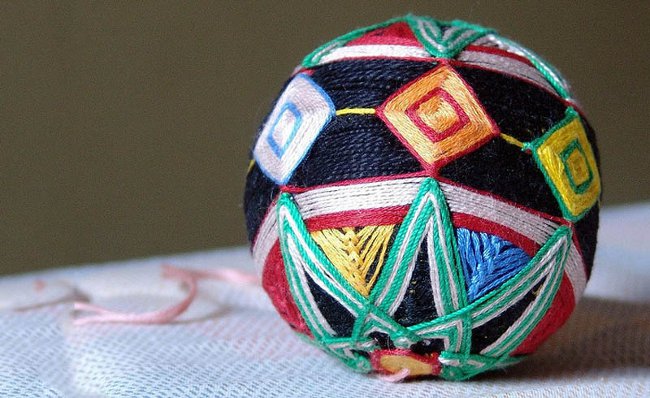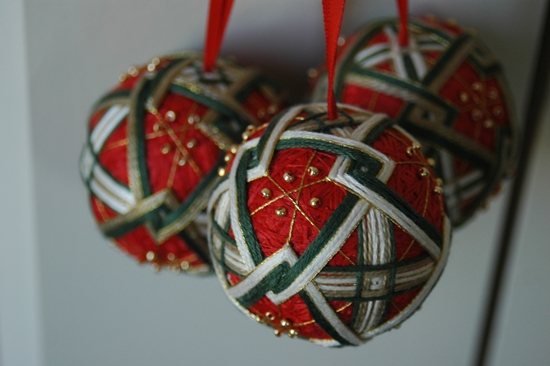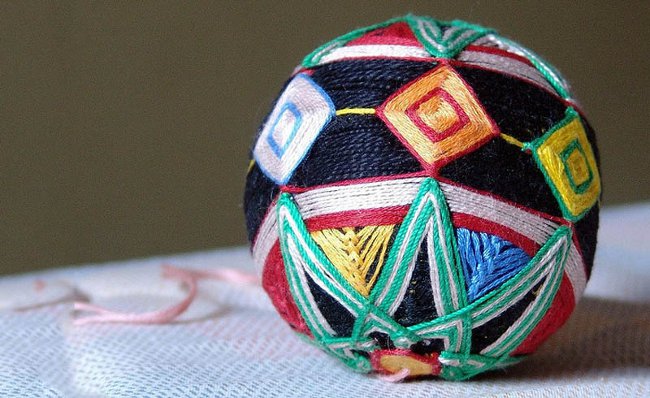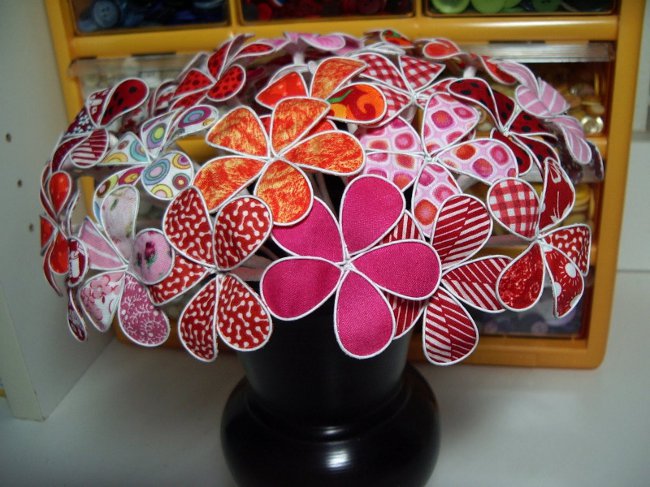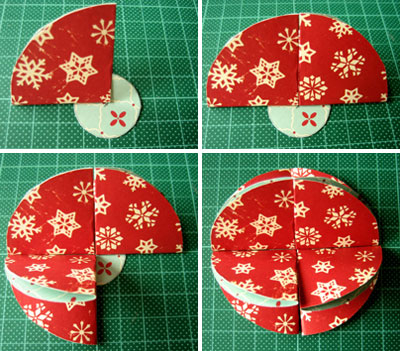Temari: balls of thread
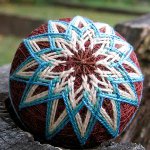 If you like to embroider and want to try your hand at something unusual, make a Temari. Temari Are Japanese balls of thread, which from simple toys turned into a kind of folk art. What are the temari and do it yourself?
If you like to embroider and want to try your hand at something unusual, make a Temari. Temari Are Japanese balls of thread, which from simple toys turned into a kind of folk art. What are the temari and do it yourself?Like many other things in Japan, the Temari were borrowed in China. At first they were Kids toys, made from scraps of old kimono. Scraps squeezed into a ball, wrapped in threads, and then expanded with decorative patterns. Over time, Temari have acquired a decorative status, they began to be embroidered with silk threads.
Since the silk thread was not available to everyone,first temari became the art of aristocracy - they were embroidered by samurai daughters and rich ladies. In the 19th century, silk thread became more accessible, and embroidered balls of thread turned into folk art. Subjects of embroidery became more diverse, they began to have a symbolic character. On the ornamentation of temari it was possible to determine the estate of the master or the region of Japan in which the temari was made.
Traditionally The base of temari is made of soft strips of tissue a width of about 2 cm and a length of about 30-40 cm,rolling them into a tight ball. You can insert small balls or bells into the base, then the temari will rattle or ring. In principle, you can use other material. For example, blanks for modern temari are made from polystyrene, and rattles have already been embedded in them. You can also use rice-wrapped rice husk or a more accessible material - crumpled packages of polyethylene.
Then the wrapped in cotton or woolen threads - balls are obtained from threads, future temari. On the balls of the thread markings are made, and embroidery is already made on it. There are a limited number of types of winding techniques, types of marking and stitch types, the variety is achieved through combinations of elements and techniques. Traditional patterns for temari are often geometric. For embroidery, you can use a mulina, silk or synthetic thread.
In Japan there is even the Japanese Associationtemari. To make balls of threads are taught in special schools. Training can last several years, and according to its results the student is assigned one of the levels of skill. So everything is not so easy! But if you do not aspire to such professional peaks, it is quite possible learn how to make simple temari own hands.
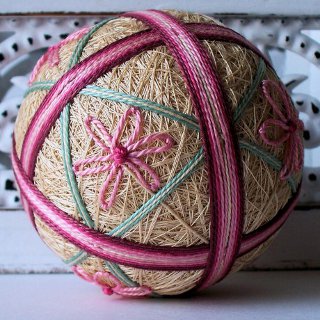
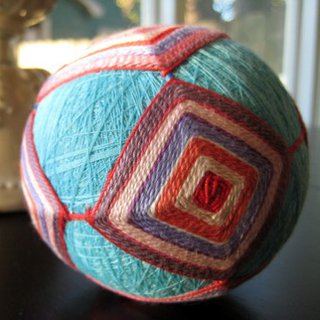
The first step in the manufacture of Temari is the foundation. Make a ball out of materials and stuffwrap it with thick cotton threads. It is important that the thread tension is uniform: when the tension is strong, the shape of the ball is distorted, and when embroideries are unevenly embroidered. From time to time, you need to crush the ball in your hands and roll it on a hard surface so that it comes out even. When the ball is covered with an even layer of thread, leave about a meter of thread, cut the rest. The resulting "tail" sew the entire surface of the resulting ball in reverse stitches.
Then comes the most important point - marking. One of the simplest markups is marking onfour sectors. Pins with colored heads mark the "poles" of the temari (two points located at opposite ends of the ball) and four points on the equator - they should be at equal distance from each other and from the poles. Wrap the metallized embroidery thread along all the pins, dividing the ball into the same sectors. The winding should begin with the top pin and end there, at this point the thread must be secured and the tail pinned to the winding. With proper skill, you can divide the ball into an even number of sectors without pins, by eye.
Then you can start decorate. Balls of threads can be decorated in many ways, using them in combinations. The most common methods include:
Winding decorative threads along the guiding lines. To keep it better, you need to fasten it in small sections with small stitches with a guide thread, to which you made the markings.
Embroidery different types of stitches.
Weaving. Usually it is combined with embroidery. Passing one thread under or over the other, you can get woven patterns.
Decorating the ball, you need fix the thread. You can decorate the ready-made temari with a decorative tassel made of thread or a loop for hanging.
Japanese balls of thread - temari - this is a very original kind of needlework. After a little training, you can learn create real works of art.
